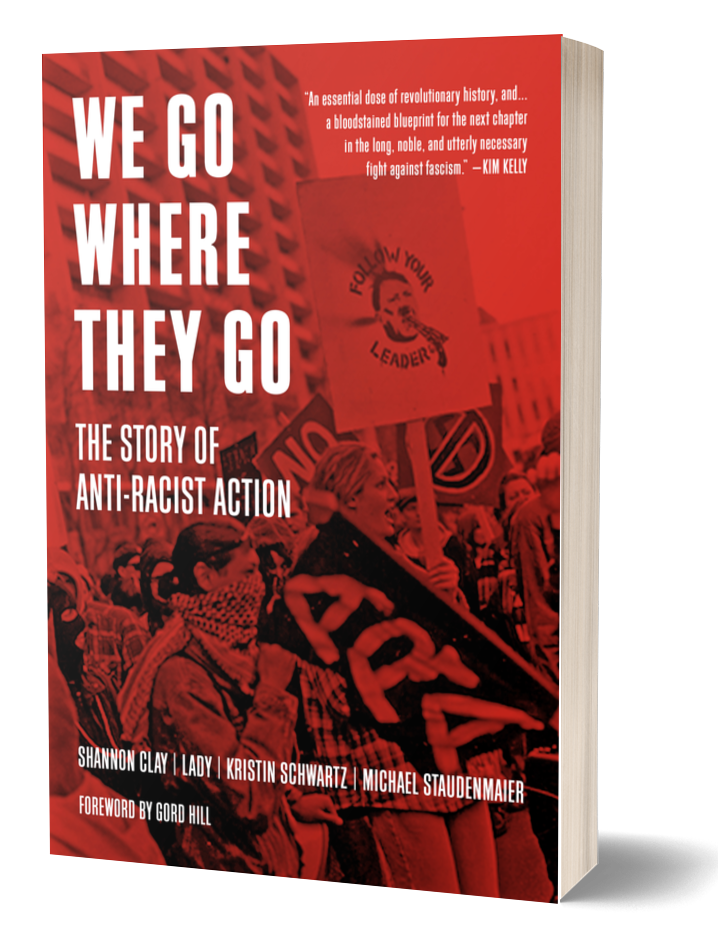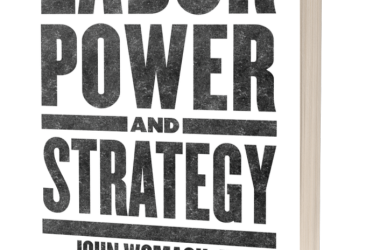By Joseph Hnatiuk
Freepress
February 18th, 2023
This richly detailed and pictorially rife historical work recounts how an American punk rock youth movement, which mimicked the 1960s skinhead culture of working-class whites and West Indians in Great Britain, morphed into an anti-racist action (ARA) organization in 1987, challenging far-right groups that flourished under Reaganism.
The title, We Go Where They Go, is taken from ARA’s “points of unity” that bound its disparate factions together and became a rallying cry for members willing to oppose right-wing extremists.
Prior to disbanding in 2013, this loosely knit organization played a significant role for three decades in the ongoing, centuries-old battle between fascist-style, white-supremacist conservative ideology and more liberal-minded proponents of an inclusive democracy.

ARA’s members were mainly young people, with a smattering of radical left-wing idealogues of varying ages, all united by their readiness to take to the streets and physically confront extremists such as Klansmen, neo-Nazis, white supremacists, anti-abortionists or far-right religious groups.
The battle continues, but tactics have changed. Today, social media pages, posts and podcasts are replacing former public venues such as street corners, parks, arenas and concert stages where fascists and other anti-democratic groups once gathered. Online venues now offer places to spread extremist messages without risking the physical confrontations of the past.
In 10 tightly structured chapters, including a graphic forward by Indigenous writer/artist Gord Hill (500 Years of Indigenous Resistance, 2010) that depicts ARA’s growth and its legacy to the Antifa movement, collaborating authors Shannon Clay, Lady, Kristin Schwartz and Michael Staudenmaier combine their individual activism and critically recognized published work in a timely assessment of anti-fascist struggles.
A glossary for the acronyms and slang that accompanied ARA’s activism, together with a list of interview sources and informative chapter end notes, helps in fashioning a coherent and well-documented synopsis of a historic mass movement.
Objectively minded readers may find the biased commentary tedious and even offensive when it combines with salty language found throughout many witness statements, but the writing style confirms why “street talk” can be an effective form of oratory.

Eyewitness accounts confirm ARA members being physically assaulted by extremists they opposed and by police protecting all citizens’ rights to “free speech,” even though these speeches ARA members were protesting championed a fascist society where freedoms would be limited.
ARA’s propensity to engage in street-level violence is shown to have affected its public image throughout its existence.
Like Antifa’s struggle with far-right extremists today, adversaries seize upon the opportunity to call anti-racist organizations hypocritical and illegitimate because of their inability to garner broad support from Black and other communities of colour, a legacy that “carries both a lesson and a warning” unless this support increases.
Winnipeg Free Press | Newsletter
Jill Wilson | Applause
Thursdays
A weekly look at what’s happening in Winnipeg’s arts and entertainment scene.
I agree to the Terms and Conditions, Cookie and Privacy Policies, and CASL agreement.

Unfortunately, this study’s scope doesn’t provide for a deep dive into reasons why non-whites have always been wary of white-dominated organizations like ARA that claim to represent their interests. But it does present clear reasons why all cultural groups should confront extremism.
The divisive populism instigated by former president Donald Trump and his far-right MAGA followers led to the Charlottesville, Va. “Unite the Right” extremist parade in 2017, the murder of George Floyd in Minneapolis in 2020 and the Jan. 6, 2021 attack on the Capitol in Washington, portending further threats to democracy.

As recalled by witness statements, ARA’s influence was also felt in Canada. The eventual collapse of a neo-Nazi white supremacist organization called the Heritage Front, the disruption of a “white power concert” in Montreal plus the persistent harassment of white supremacists and holocaust-deniers such as Paul Fromm and Ernst Zundel were some noteworthy successes.
One contributor to this engaging study boldly states Canada doesn’t have a fascist government today partly because of anti-extremist groups “who made sure it didn’t happen,” giving readers pause to consider whether or not the disruptive and misnamed “Freedom Convoy” which occupied Ottawa in 2022, with underlying intentions of insurrection, would even have been planned had ARA still been a force.
Joseph Hnatiuk is a retired teacher.





